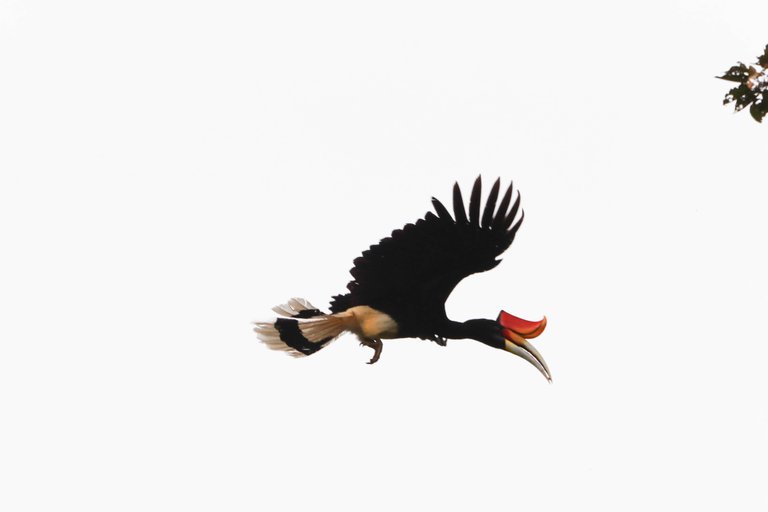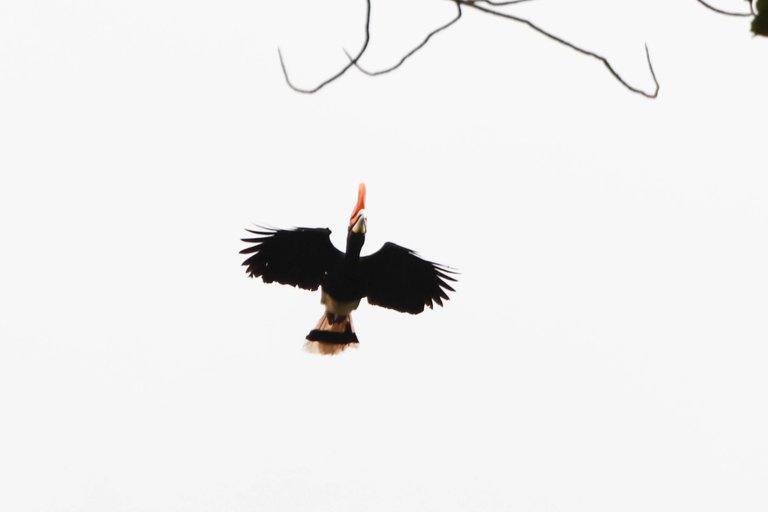WORLDPHOTOGRAPHY CONTEST • ROUND 31 •

Hi everyone!
This time I took part in this contest and I think this week's theme is very interesting, namely Bird of the World. If you are interested in taking part in the contest as well, you can find out more about the rules by clicking this Link WORLDPHOTOGRAPHY CONTEST • ROUND#31
So for the entry, I will share some photos taken when I entered the Ulu Masen ecosystem area to monitor the Helmeted Hornbill, a bird whose existence is almost extinct in the wild due to hunting. and after two days of monitoring I couldn't find the Helmeted Hornbill and I found the Rhinoceros Hornbill.

The rhinoceros hornbill is very large, 110–127 cm. This bird is one of the largest species of hornbill. This bird also lives in the forests of Sumatra and Java. These birds have lost their homes due to forest exploitation and hunting.
The rhinoceros hornbill can be found in low densities in most lowland and hill forest blocks. Hornbill has a very important function as a dispersal of tree seeds, generally the seeds eaten are thrown everywhere. The presence of this animal is very striking because it has a large body size, as well as a distinctive habit and voice. However, in general, rhino hornbill can only be found in small numbers in one place in a large forest area.

According to the IUCN Red List, the rhino horn is a species that almost scarce. CITES also classifies animals This bird is in the Appendix II category (a species that is prohibited for international commercial trade because it is almost scarcity, unless the trade is subject to regulation strict, so that inappropriate use can be avoided). -


Serious Threat
Along the islands of Sumatra and Borneo, much of the tropical rainforest has been converted to agricultural land, plantations, and settlement. Forest fires, which have now become an annual phenomenon, have claimed many victims. Unsustainable logging has done a lot of damage forest areas on the islands of Sumatra and Borneo.
Actually, rhino hornbill can survive in forest areas where the timber is harvested with a good and responsible management system responsibility, and hunting activities are strictly controlled, so that in the end this animal does not experience scarcity which leads to extinction. To nest this bird, it needs a good wooden tree hollow, which is usually an old and thick tree.

Rhinoceros hornbill brings food in the form of grains to the nest for the food needs of the incubating partner, this process takes a long time until the chicks hatch

I took some of these photos in the Ulu Masen ecosystem in Aceh, Indonesia. a large forest area that includes a nature conservation area in the northern part of the Aceh Region. The Ulu Masen area consists of lowland forest and highland forest, this is something that is unique to this area
That's some pictures and a little story that I managed to shoot and get that day, I hope my friends love it.
Keep following me here for other photography postings.
Best regards @teukuboyhaqie
| Galery | Photography |
|---|---|
| Taken with | Canon EOS 1D Mark II |
| Lens | 28-300 mm |
| Location | Aceh |
| Taken by | @teukuboyhaqie |
Really curious! Thank you for your participation.
@marc-allaria You're welcome